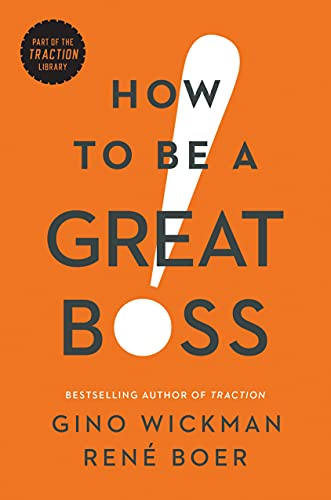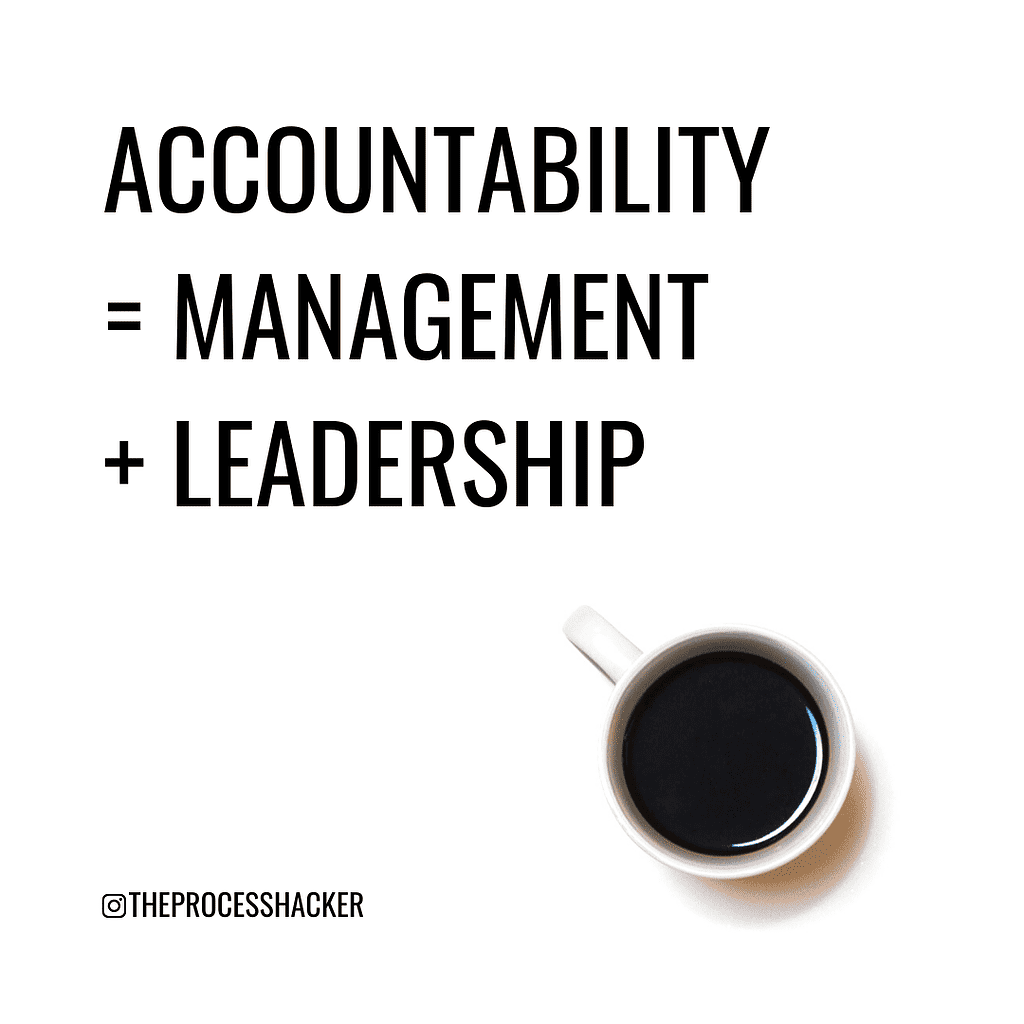How to Be a Great Boss by Gino Wickman | Summary
In How to Be a Great Boss, Gino Wickman and Rene Boer help bosses become better and get the most out of their people. Gino Wickman is one of the cofounders of EOS Worldwide, and Rene Boer has more than 40 years of experience leading teams in the restaurant industry. Together, they show you how to be a great boss and provide practical tools to improve your organization.
The book is part of a larger series about the Entrepreneurial Operating System (EOS), which is a complete tool kit to help leadership teams improve, gain traction, and grow their companies. There are Six Key Components in EOS, which are Vision, People, Data, Issues, Process, and Traction. To learn more about EOS, check out the book, Traction: Get a Grip on Your Business (book summary).
Buy How to Be a Great Boss on Amazon

How to Be a Great Boss by Gino Wickman and René Boer
Download the PDF Book Summary for How to Be a Great Boss
Chapter 1 – Being a Great Boss
Since 2000, Gallup surveys have found that for full-time American employees: 31% are engaged at work, 17.5% of American employees are actively disengaged, and 51% are not engaged. The first group probably work for a great boss as they arrive early, get the job done, leave late, solve issues, and are energized. In contrast, the latter two groups work for a terrible boss or one who doesn’t care about their employees.
If you subscribe to the latter category of bosses, you will not achieve your goals. However, you must subscribe to the first category. Your people matter and they are your competitive advantage, so you must decide to be a great boss.

Chapter 2 – Do You Have What It Takes?
First, you need to use the GWC tool to evaluate whether you can handle the challenging task of becoming a great boss. GWC is an acronym for the three questions you must ask yourself: Do you Get It, Want It, and have the Capacity To Do It?
- Get It: You have the natural ability and deeply understand the supervisory position. Your comprehension is so good that your peers and subordinates do not question it.
- Want It: You have a genuine desire to be a great boss. You were not wrongly led or enticed into taking the role, and you are will to overcome the obstacles that get in your way.
- Capacity To Do It: You have the four capabilities to do the work:
- Emotional to empathize and connect with others;
- Intellectual to think critically and solve issues;
- Physical to have the energy to finish the work; and
- Self-discipline to structure time and prioritize tasks.
The first two (Get It and Want It) are either things you have or don’t have. You gain the Capacity To Do It by investing the time and effort to excel in the position.
Chapter 3 – Delegate and Elevate
The EOS tool of Delegate and Elevate will help you effectively use your time and strengths. It will clarify and identify the activities that you must delegate to others to free up your time capacity to be a great boss. There are five steps in the process of delegating and elevating:
- Write down all business tasks that you do during the day, week, and month in detail.
- Compare your activities to EOS’s list to see if you overlooked any tasks.
- For each job, decide if you
- Love Doing It and are Great at Doing It;
- Like Doing It and are Good are Doing It;
- Don’t Like Doing It and are Good at Doing It; and
- Don’t Like Don’t It and are Not Good at It.
- If most of your tasks fall into the first two categories, you can become a great boss.
- If you cannot finish the business tasks listed, you have a time capacity problem and need to delegate work.
This exercise will show your level of proficiency and enjoyment in each of your tasks.
Download the PDF Book Summary for How to Be a Great Boss
Chapter 4 – Surround Yourself with Great People

Great bosses know how to evaluate their teams and surround themselves with great people. First, great people must be defined to build a cohesive, productive team:
Great People – “the Right People in the Right Seats”
- Right People – the people who fit your culture and share your core values
- Right Seats – the role that allows an employee to operate within his or her area of greatest skill and passion
The right people understand the vision, fit within the company culture, and will work to make the organization better. Your company must decide upon core values that embody the attributes and characteristics of your people.
The right seat is a subordinate position that reports to you as a boss. You have to define five major responsibilities, so the right person has clear expectations. After defining seats, use the GWC tool to figure out if one the right person fits (Gets It, Wants It, and has the Capacity To Do It) that right seat.
Chapter 5 – Leadership, Management, and Accountability (LMA)

The authors use this guiding principle for how to be a great boss:
“A great boss creates a work environment where people are fully engaged and highly accountable.”
The Four Truths
To create a culture of accountability, you must embrace four truths:
- It Can Be Simple. You have to consistently follow the five leadership principles and five management principles outlined below.
- Don’t Change Your Style. You have to authentically be yourself to be able to have others believe in and trust you.
- Genuinely Care About Your People. People will work for you when they know you care about their wellbeing, work, and growth.
- You Must Want Greatness. You must desire to be a great boss, and can do so by continuously investing in your self-improvement.
Leadership + Management = Accountability (L + M = A)

Accountability is a result of leadership and management:
- Leadership – working “on” the business; providing clear direction, creating an opening for people, and taking time to think; creating a Vision
- Management – working “in” the business; creating clear expectations, communicating well, and making sure that things get done; gaining Traction
Chapter 6 – The Five Leadership Practices
To become a great leader, you need to understand the Five Leadership Practices:
- Give Clear Direction. Provide clear direction by conveying a compelling vision that focuses and motivates everyone in the organization to rise up, move toward it, and achieve it.
- Provide the Necessary Tools. Give the necessary tools and support your people need to succeed, including training, technology, people, time, and attention.
- Let Go of the Vine. Let your people go and work. Many leaders have trouble letting go of responsibilities and get in the way. You should trust that your people are capable of getting the work done.
- Act with the Greater Good. Put the needs of the company and your people above your own needs. Your actions and decisions should align with the vision conveyed to your people.
- Take Clarity Breaks. Take breaks to remain energized and confident for your people. Clarity Breaks is time scheduled away from the office to think and to work deeply on your business.
For more on leadership, check out The 5 Levels of Leadership (book summary) by John Maxwell.
Download the PDF Book Summary for How to Be a Great Boss
Chapter 7 – The Five Management Practices
To become a great manager, you need to understand the Five Management Practices:
- Keep Clear Expectations. Set and communicate clear expectations to your subordinates for the following areas:
- Their five major positional roles and responsibilities;
- The core values of the organization;
- Their rocks or key quarterly priorities; and
- Their key performance indicators.
- Communicate Well. Communicate with your subordinates, and avoid making assumptions by
- Sharing positive and negative emotions;
- Asking questions instead of making statements;
- Rephrasing what you heard back to your direct report; and
- Have your subordinate repeat back to you what they heard.
- Maintain a Meeting Pulse™. Hold regular meetings with your team every week for 60 to 90 minutes. These meetings should be held at the same time and day, have the same schedule, and start and finish on time. You should review priorities, analyze measurables, and solve issues.
- Have Quarterly Conversations. Hold face-to-face meetings with each member of your team to discuss priorities, roles, and core values. These informal meetings should be held offsite to better manage and strengthen each of your relationships.
- Reward and Recognize. Acknowledge and appreciate your people by:
- Giving positive or negative feedback within 24 hours;
- Criticizing in private to keep trust and praise in public to celebrate with peers; and
- Being their boss and not their buddy.
The Three-Strike Rule
This EOS tool helps you deal with subordinates when they consistently fail to meet your expectations:
- Meet with the individual, identify problems, and reach an agreement on corrective actions.
- Meet with the individual again and evaluate their performance over the last thirty days.
- If the rule is applied effectively, most will quit by the third-strike meeting. If not, you should fire them.
Chapter 8 – The Quarterly Conversation

The Quarterly Conversation is a quarterly face-to-face meeting with each member of your team to discuss priorities, roles, issues, and core values. The boss should hold the informal meeting offsite to better manage and grow each of their relationships.
Discuss the following two questions:
- What’s Working? Have your employee share their achievements, work activities, or processes. Ask them what they think or feel is going well with your relationship or within the organization. After they share, you should share your thoughts and recognize them for their achievements, actions, and growth.
- What’s Not Working? Provide space for you and your employee to identify problems and root causes. At first, let your subordinate speak freely and listen without interruption. After you should provide your comments on what is not working. For the issues that can be solved, decide on a plan of action, and solve them.
The Annual Review is a complimentary meeting with your direct report to maintain clear expectations, recognize major accomplishments, acknowledge areas for improvement, and create a plan of action for the year.
Chapter 9 – The Four People Issues
There are Four People Issues that you will probably deal with as a boss:
- Right Person, Right Seat: This situation may not seem like an issue, but you need to give these people time and attention. These individuals will contribute to your success and raise problems, so you need to pay them properly and recognize them for their achievements.
- Right Person, Wrong Seat: You have the Right Person, but you acquired, hired, or promoted them to the Wrong Seat. This person fits your core values and culture, but do not produce results or respond to feedback. You need to find the Right Seat or terminate them to leave with dignity.
- Wrong Person, Right Seat: You have the Wrong Person in your organization, and it seems that they are improperly achieving results and undermining you, your core values, and your team. This type of termination can be severe, but it will impact your culture, and your team will thank you for it.
- Wrong Person, Wrong Seat: This issue is the most apparent and should be noticeable within the first quarter of them coming onto your team. If you ignore getting rid of them, you will deal will the grim consequences, and others will lose respect for you.
Chapter 10 – A Final Word on People
“Great bosses succeed in getting the most out of their people. To ensure that success becomes a habit, they continually raise the expectations of their people and hold them accountable to higher standards.”
Download the PDF Book Summary for How to Be a Great Boss
Next Steps
In How to Be a Great Boss, Gino Wickman and Rene Boer will help you, as a boss, improve yourself and get the most out of your people. I hope this blog post has inspired you to get your copy of How to Be a Great Boss or check out the rest of the EOS library:
- Traction (book summary): Helps entrepreneurs implement EOS and the Six Key Components to gain traction and grow their businesses.
- Get a Grip (book summary): Tells a fictional business fable about an entrepreneurial company hitting the ceiling. In response, the company’s leadership implements EOS for success.
- Rocket Fuel (book summary): Provides a guide for the integral relationship between a Visionary and an Integrator.
- What the Heck is EOS? (book summary): Provide a complete and simplified guide on the EOS process and tools for your employees.
- The EOS Life (book summary): Live your ideal life “doing what you love, with people you love, making a huge difference, being compensated appropriately, with time for other passions.”
- Process (book summary): Helps you document, simply, and package your core processes such that they are followed by all in your organization.
- Entrepreneurial Leap (book summary): Helps you determine if you are an Entrepreneur-in-the-making, take the Entrepreneurial Leap, and become an entrepreneur.







